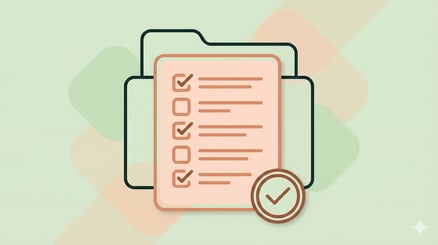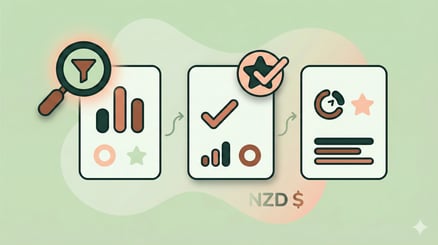What are Spider Veins?
Spider Veins: Symptoms and Prevention
Spider veins are unhealthy veins found just under the skin, most commonly in the lower extremities. Spider veins are usually blue, red, or purple in color and are often found in outward radiating clusters. There may be a spider appearance that gives them their name. Spider veins are usually caused by an underlying condition called chronic venous insufficiency.
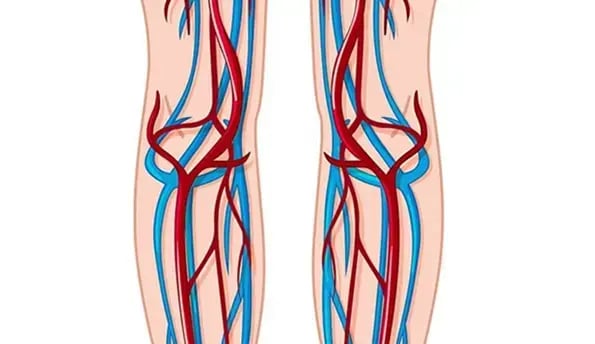
How are Spider Veins Different from Varicose?
Spider webs are minor versions of enlarged red, blue, and purple veins that typically appear on the surface of your legs or face. Spider web veins, usually less than 1 millimeter in diameter, are flat and do not cause noticeable symptoms.
Varicose veins are more prominent – 3 millimeters or more in diameter. They have a deep, string-like appearance, mainly on the calves, thighs, and ankles. Although varicose veins do not cause noticeable symptoms in some patients, many complain of pain, swelling, cramping, itching, and heaviness in the legs that affect their quality of life.
Varicose veins are considered a more serious medical problem than spider veins, not just because of the bothersome symptoms. Left untreated, varicose veins can open up and progress to infected wounds, uncontrolled bleeding, and blood clots. A varicose vein can form a blood clot. This blood clot can break off and requires immediate medical attention as it can be potentially dangerous and to prevent it from traveling to the lungs.
What Causes Varicose Veins and Spider Veins?
Spider veins are usually caused by poor circulation in veins slightly more profound in the legs, a condition known as chronic venous insufficiency. The primary job of the veins in the legs is to carry blood back to the heart. The veins in the leg carry most of the blood, but a second set of vessels closer to the skin, known as the saphenous or superficial veins, has a small amount of blood up.
All veins in the legs use one-way gates called valves to keep blood flowing in the right direction. Blood flows against gravity through a valve. The valve then closes, preventing blood from returning to the feet. Due to a number of different factors, the valves can become dysfunctional and allow blood to leak downward. The veins below the valve swell, and new veins (including spider veins) can form due to the high pressure in the superficial veins.
Also, 54% of office workers women and 45 of women overall have spider veins. Spider Veins can be asymptomatic or cause significant discomfort. Symptoms include restlessness, fatigue, heaviness, cramps, skin surface swelling, and pain. Generally speaking, symptoms related to venous insufficiency and spider veins are worsened by prolonged sitting or standing and may improve with regular exercise.
Our mission is to create a world where every investment in modern beauty is Worth It.
Let's keep in touch
Get updates of the treatments you are interested
Other Risk Factors for Varicose Veins and Spider Veins
- Pregnancy,
- Permanent sitting,
- Standing for long periods of time,
- Ankle trauma,
- Genetic predisposition.
Family history or genetics is the most significant risk factor. If your mom and dad have spider veins, your risk of developing chronic venous insufficiency is 90%.
Symptoms of Varicose Veins and Spider Veins
Spider veins often cause few symptoms beyond an unusual cosmetic appearance. However, burning, itching, and tingling can also be seen depending on the person.
In more severe cases of vascular disease, people may develop skin changes and ulcerations that heal poorly.
The main complaints caused by varicose veins are:- Blue, purple bumps on legs
- Pain
- Feeling of heaviness in the legs
- Swelling in the legs
- Numbness in the legs
- Itching
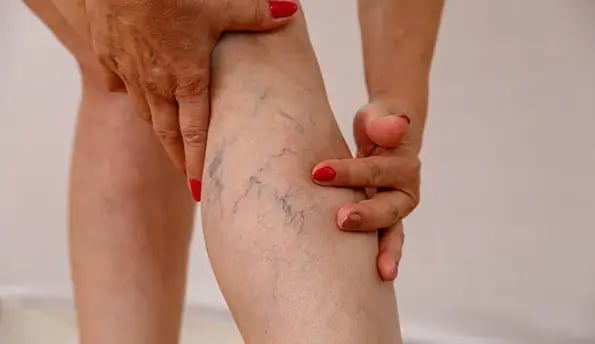
What Are the Treatment Options for Varicose Veins and Spider Veins
Sclerotherapy: Conservative treatments will not give the necessary results in those with spider vein symptoms. For this reason, the venous vascular system should be examined with a color Doppler ultrasound beforehand.
Radiofrequency Ablation: Endovenous ablation with radiofrequency ablation is a minimally invasive treatment for chronic venous insufficiency. It is similar to laser ablation but uses thermal energy instead of laser energy. Compared to laser ablation, radiofrequency ablation is typically associated with less discomfort and bruising after the procedure.
Endovenous Laser Ablation: Laser treatment of varicose veins is used to treat the underlying venous insufficiency. It is safer and more accessible than most vascular surgeries and can only be performed outpatient with local anesthesia.
Laser Treatment: Varicose veins treatment with a superficial laser is primarily used to reduce the appearance of spider veins. It works best on the smallest vessels and is an excellent alternative to sclerotherapy or can be used in conjunction with sclerotherapy to optimize results. It is not recommended for certain skin types and does not affect symptoms due to chronic venous insufficiency.
Daily Exercise: This exercise can also be developed above all else. Movement causes the calf muscle to tighten, pumping blood toward the heart and increasing circulatory efficiency. Affected individuals should avoid avoiding it or standing. Leg elevation above the level of your heart while sleeping can also improve circulation and reduce leg swelling.
Compression Stockings: Support stockings, also known as compression stockings, are simple. Compression stockings help push blood toward the heart and reduce pressure in the leg veins. They don't improve the appearance of spider veins, but they can help relieve symptoms. Proper fitting of compression stockings is important and we recommend formal measurement and sizing at a vein doctor's office.
Our mission is to create a world where every investment in modern beauty is Worth It.
Let's keep in touch
Get updates of the treatments you are interested
Living with Spider Veins?
Spider Veins: Symptoms and Prevention
Spider veins are unhealthy veins found just under the skin, most commonly in the lower extremities. Spider veins are usually blue, red, or purple in color and are often found in outward radiating clusters. There may be a spider appearance that gives them their name. Spider veins are usually caused by an underlying condition called chronic venous insufficiency.

How are Spider Veins Different from Varicose?
Spider webs are minor versions of enlarged red, blue, and purple veins that typically appear on the surface of your legs or face. Spider web veins, usually less than 1 millimeter in diameter, are flat and do not cause noticeable symptoms.
Varicose veins are more prominent – 3 millimeters or more in diameter. They have a deep, string-like appearance, mainly on the calves, thighs, and ankles. Although varicose veins do not cause noticeable symptoms in some patients, many complain of pain, swelling, cramping, itching, and heaviness in the legs that affect their quality of life.
Varicose veins are considered a more serious medical problem than spider veins, not just because of the bothersome symptoms. Left untreated, varicose veins can open up and progress to infected wounds, uncontrolled bleeding, and blood clots. A varicose vein can form a blood clot. This blood clot can break off and requires immediate medical attention as it can be potentially dangerous and to prevent it from traveling to the lungs.
What Causes Varicose Veins and Spider Veins?
Spider veins are usually caused by poor circulation in veins slightly more profound in the legs, a condition known as chronic venous insufficiency. The primary job of the veins in the legs is to carry blood back to the heart. The veins in the leg carry most of the blood, but a second set of vessels closer to the skin, known as the saphenous or superficial veins, has a small amount of blood up.
All veins in the legs use one-way gates called valves to keep blood flowing in the right direction. Blood flows against gravity through a valve. The valve then closes, preventing blood from returning to the feet. Due to a number of different factors, the valves can become dysfunctional and allow blood to leak downward. The veins below the valve swell, and new veins (including spider veins) can form due to the high pressure in the superficial veins.
Also, 54% of office workers women and 45 of women overall have spider veins. Spider Veins can be asymptomatic or cause significant discomfort. Symptoms include restlessness, fatigue, heaviness, cramps, skin surface swelling, and pain. Generally speaking, symptoms related to venous insufficiency and spider veins are worsened by prolonged sitting or standing and may improve with regular exercise.
Our mission is to create a world where every investment in modern beauty is Worth It.
Let's keep in touch
Get updates of the treatments you are interested
Other Risk Factors for Varicose Veins and Spider Veins
- Pregnancy,
- Permanent sitting,
- Standing for long periods of time,
- Ankle trauma,
- Genetic predisposition.
Family history or genetics is the most significant risk factor. If your mom and dad have spider veins, your risk of developing chronic venous insufficiency is 90%.
Symptoms of Varicose Veins and Spider Veins
Spider veins often cause few symptoms beyond an unusual cosmetic appearance. However, burning, itching, and tingling can also be seen depending on the person.
In more severe cases of vascular disease, people may develop skin changes and ulcerations that heal poorly.
The main complaints caused by varicose veins are:- Blue, purple bumps on legs
- Pain
- Feeling of heaviness in the legs
- Swelling in the legs
- Numbness in the legs
- Itching

What Are the Treatment Options for Varicose Veins and Spider Veins
Sclerotherapy: Conservative treatments will not give the necessary results in those with spider vein symptoms. For this reason, the venous vascular system should be examined with a color Doppler ultrasound beforehand.
Radiofrequency Ablation: Endovenous ablation with radiofrequency ablation is a minimally invasive treatment for chronic venous insufficiency. It is similar to laser ablation but uses thermal energy instead of laser energy. Compared to laser ablation, radiofrequency ablation is typically associated with less discomfort and bruising after the procedure.
Endovenous Laser Ablation: Laser treatment of varicose veins is used to treat the underlying venous insufficiency. It is safer and more accessible than most vascular surgeries and can only be performed outpatient with local anesthesia.
Laser Treatment: Varicose veins treatment with a superficial laser is primarily used to reduce the appearance of spider veins. It works best on the smallest vessels and is an excellent alternative to sclerotherapy or can be used in conjunction with sclerotherapy to optimize results. It is not recommended for certain skin types and does not affect symptoms due to chronic venous insufficiency.
Daily Exercise: This exercise can also be developed above all else. Movement causes the calf muscle to tighten, pumping blood toward the heart and increasing circulatory efficiency. Affected individuals should avoid avoiding it or standing. Leg elevation above the level of your heart while sleeping can also improve circulation and reduce leg swelling.
Compression Stockings: Support stockings, also known as compression stockings, are simple. Compression stockings help push blood toward the heart and reduce pressure in the leg veins. They don't improve the appearance of spider veins, but they can help relieve symptoms. Proper fitting of compression stockings is important and we recommend formal measurement and sizing at a vein doctor's office.




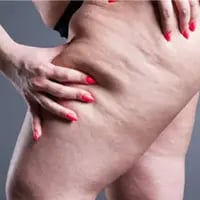
.webp?width=738&height=510&name=liposuction%20(1).webp)


